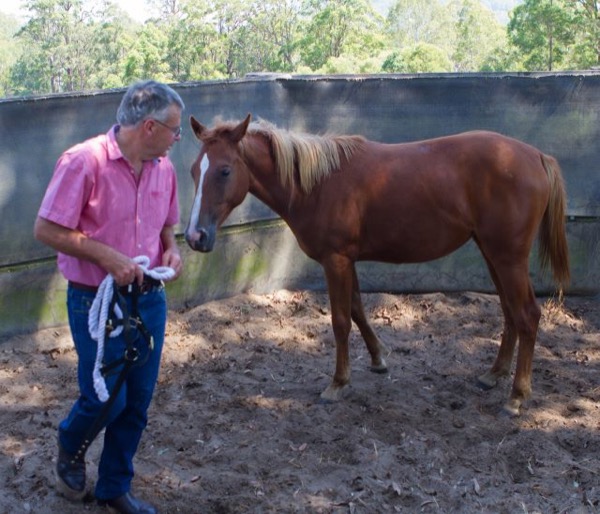One of my grandfather’s favourite sayings was ‘Work beats the best of them, man or beast’.
He firmly believed that if you were having trouble with a horse or a man, the best thing to do was to work them to the point of exhaustion.
When I was a kid, Billy Wilkie was another old timer who had the same idea as Grandfather.
Billy was a drover but he’d moved with the times and bought himself a cattle truck.
The only trouble was that Bill had never learned to drive, so he always paid someone to drive his old Bedford to the local saleyards at Camden and Picton.
Way back when I was fourteen, I remember Bill dropping off a pony for me to ‘break in’.
About a week later, Bill delivered some cows to our place and saw me feeding the pony.
‘You shouldn’t feed that pony, Davies’ he said.
‘Fence posts and rails, that’s all you should give him while you’re breaking him in.
You’ve got to wear him down.’
After more than forty years, this way of thinking is unfortunately still alive and well in the horse world.
Many trainers still think that chasing a horse to the point of exhaustion will teach him something.
They think that a tired, sweating, distressed horse will learn ‘respect’ and will be ‘submissive’.
Many trainers also say that a horse will be obedient ever after if you tie him down on the ground.
Oh how these trainers miss the point.
They think that wearing a horse out or tying him down on the ground means he’ll magically know how to lead, tie up, be saddled, ridden and whatever else they try to do.
This of course is nonsense.
Every horse must be taught, every step of the way. No horse is born magically knowing what we want him to do.
You must remember that if a horse understands what’s wanted, he won’t run until he’s sweating, puffing and distressed.
He won’t fight, kick up, buck or rear.
No horse will put himself through such drama and trauma, if he understands what’s wanted.
This is fully explained in my best-selling book.
Some trainers think that it’s best to dismount and chase a horse from the ground if he resists, rears or kicks up under saddle.
I guess they feel safer chasing such a horse from the ground but here’s the bad news – it won’t help.
Yes, anyone can wear a horse down by chasing him from the ground.
When the horse is worn out, he may even appear to have improved when he’s ridden again.
However, the horse will revert to his old behaviour when he freshens up.
Chasing a horse from the ground won’t teach him to do as you ask when you ride him.
Horse lessons should never be stressful for the horse or the handler.
Lessons should always be less than twenty minutes.
If you keep going on and on, you’ll always reach the point where your horse becomes confused and stressed.
Remember, if you underdo a lesson, you can always come back tomorrow and do some more.
If you overdo a lesson however, you can’t tell your horse to forget the part where he was distressed, confused and upset.
If you feel you have to chase your horse until he’s tired, sweating, puffing and distressed, you’re doing something wrong.
And if you find yourself tired, sweating, puffing and distressed, you’re also doing something wrong.
For your horse’s sake, it’s time to go back to the drawing board.

